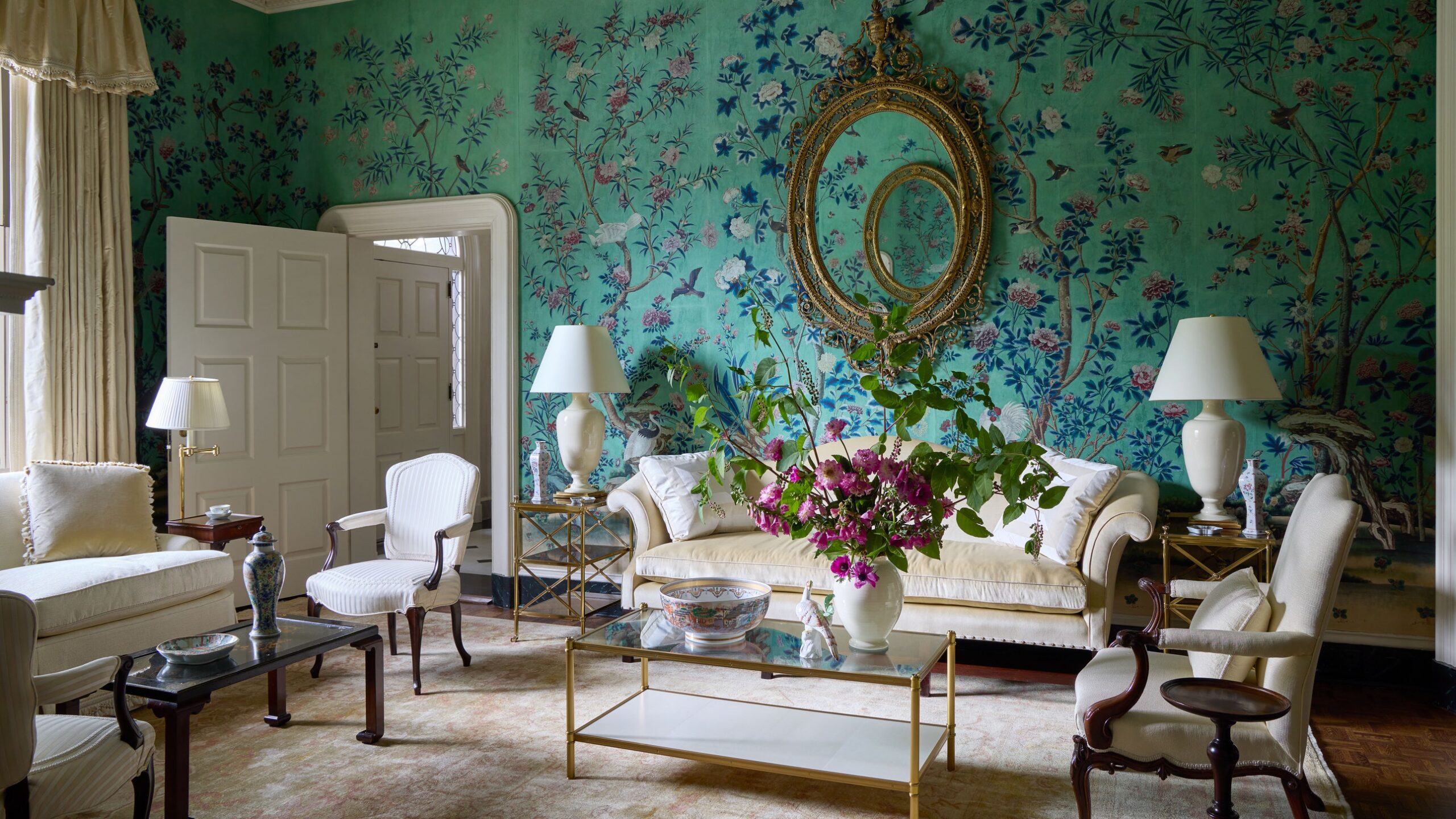Since 1942, US presidents have ensconced visiting dignitaries at Blair House, a complex of four highly secured town houses run by the Department of State and anchored by Blair House itself—an 1824 former private home that is celebrating its bicentennial this year. Just a two-minute walk from the White House, “Blair House is often referred to as ‘the front door of America,’ with foreign delegations coming that have possibly never visited our country before,” says Sarah Perot, chairman of the board of trustees for the Blair House Foundation, a nonpartisan charitable organization. “It’s really our opportunity to extend just the warmest hospitality. This is such a major part of our diplomatic efforts.”
The retreat down the street is so welcoming that visitors—which last year included delegations from Brazil, Japan, and Ireland—often remark on how at home they feel there. “If they were to stay at a hotel, there would be [more] people around and they don’t ‘own’ the space. Here, they’re free,” says Matthew Wendel, assistant chief of protocol and general manager of Blair House, who notes that he personally welcomes arrivals to “their house” when he greets them out front—a homier entrée than any red carpet. “We fly their flag outside,” Wendel notes.
Blair House may owe its existence to Sir Winston Churchill, who “had a reputation for not being the best house guest,” Wendel says, recalling the British prime minister’s visits during World War II. “He would stay up all hours of the night waking up the president. And so Mrs. Roosevelt finally said, ‘You’ve got to find him someplace else to stay,’ and suggested that the [US government] purchase this house.” Given the provenance of pieces within and the storied aura (everyone from Her Majesty Queen Elizabeth II to Nelson Mandela have inked the guest book), staying at the 14-guest-room Blair House is a bit like having a sleepover at the Smithsonian. “The house just breathes history,” Perot says. President Abraham Lincoln stopped by often to visit his cabinet member Montgomery Blair and was so relaxed that “he would prop his feet up on the mantel in the 1728044346 Lincoln Room,” Perot recounts. In April 1861, Robert E. Lee was offered the command of the Union Army there and declined. Among the thousands of artifacts of Blair House, highlights include a framed 1862 letter from Lincoln in his scrawl and the actual desk where the president used to work during his visits. And yes, guests of Blair House are welcome to crack open a laptop and work there too—right in Lincoln’s spot. “The furniture can be sat on and used,” Wendel says. “We don’t want to be a museum. We want to be a home.”

